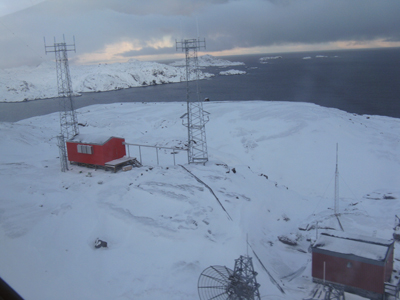
Features
Safety
On final: Addressing industry needs
So, NAV CANADA, what are you doing to keep aircraft moving safely and efficiently, at less cost to those paying your bills?
April 14, 2010 By John Crichton
So, NAV CANADA, what are you doing to keep aircraft moving safely and efficiently, at less cost to those paying your bills?
 |
| PHOTO: nav canada
|
Given the adverse times of the past year, this question best sums up the expectations of NAV CANADA customers.
And it’s a reasonable question. One area worth noting is the range of air navigation system innovations developed and implemented with our customers over the past decade. These innovations are bolstering the operational performance of the country’s civil Air Navigation System (ANS), bringing safety and efficiency benefits along with fuel-cost savings and reductions in greenhouse gas emissions. And further improvements are on the horizon.
When major resources in time and money are at stake, it makes sense to involve customers from the earliest stages of a project. That collaborative dynamic was a major part of NAV CANADA’s decision to move forward with Automatic Dependent Surveillance – Broadcast (ADS-B).
In January 2009, we implemented the first-ever ADS-B system in Canadian airspace, introducing surveillance coverage over Hudson Bay in the North. In this high-traffic corridor, controllers can now separate ADS-B equipped aircraft by five nautical miles instead of 80 nautical miles under procedural airspace. Aircraft using ADS-B airspace must be properly equipped and certified. There are 17 certified airlines and 425 certified aircraft eligible to use ADS-B airspace over Hudson Bay. By late 2010, we expect about 80 per cent of aircraft transiting this airspace will be ADS-B eligible.
The next phase is underway, with plans this year to extend ADS-B coverage over northeast Canada and the southern part of Greenland, capturing a section of North Atlantic airspace.
Another new surveillance technology is Multilateration (MLAT). MLAT was recently implemented at the airport in the oilfield hub of Fort St. John, B.C., where it will improve the efficiency rate of arrivals and departures. MLAT is also going operational at Vancouver Harbour, providing a support tool for air traffic controllers.
The Winter Olympics in Vancouver-Whistler was a proving ground for MLAT. In advance of the Winter Games, NAV CANADA installed 32 MLAT stations along the region’s mountainous Sea-to-Sky Corridor. The system helped the Company meet the challenge of increased traffic volume and complexity.
Advances in technology have also generated innovative approaches to air-traffic management.
The implementation of Reduced Vertical Separation Minima (RVSM) is one such innovation. RVSM has increased airspace capacity by reducing vertical separation between flight levels 290 and 410 inclusive.
Other initiatives include Area Navigation (RNAV) and Required Navigation Performance (RNP). There are currently 85 published RNAV STAR (Standard Arrival Route) procedures at 20 Canadian airports and 19 published RNAV SID (Standard Instrument Departure) procedures at six airports.
More can and needs to be done in this area. The greater number of aircraft that are equipped for these kinds of procedures, the more we all benefit, especially in busy terminal areas of major airports. We will be proactive in addressing the gains that can be made.
In the meantime, the NAV CANADA Scheduling and Sequencing System (SASS) is improving arrival rates at key airports by helping controllers allocate landing slots and reducing the potential for delays.
At NAV CANADA, employees have developed some of the most important ATM systems to come along in a generation. The Canadian Automated Air Traffic System (CAATS) is one of the most advanced flight-data systems ever created. In 2010, CAATS will be fully deployed across the country, with new functionality that will bring added fuel savings for customers.
Innovations like these are producing significant cost savings for customers and reductions in greenhouse gas emissions. In October 2009, we produced a comprehensive report, called CIFER, which details these savings and forecasts future savings as new initiatives come on-stream. The full report is available on our website at www.navcanada.ca .
In other words, we hear and understand the concerns of our customers, and we are committed to addressing them through a joint commitment to being innovative in everything we do, especially during times of adversity.
John Crichton is president & CEO of NAV CANADA.